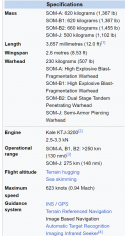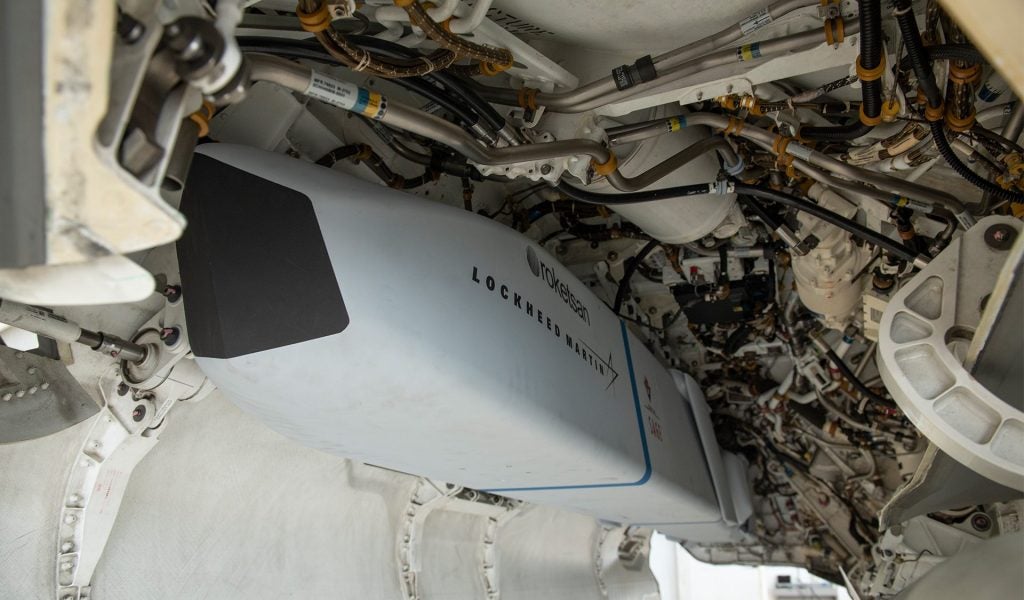You are using an out of date browser. It may not display this or other websites correctly.
You should upgrade or use an alternative browser.
You should upgrade or use an alternative browser.
JF-17/FC-1 Fighter Aircraft thread
- Thread starter johnqh
- Start date
I do not think 100% of Chinese subsystems can be replaced. In either case, JF-17 does not present something strategically vital in terms of Tech for China, China is generation and half ahead. I also think such agreement would 100% need a nod from China. Not 100% of the aircraft is produced in Pakistan. I also think China would 100% have no issues of JF-17 being sold to Azerbaijan, Turkey being in NATO or not. What tho possible is Pakistan likely have JF-17 export on a much higher priority than say China and seem to be doing decent amount of leg work to promote it, which is fine and honestly there is absolutely nothing wrong with that either.
Every single subsystem can be replaced. The only question is how much of the aircraft would have to be replaced to do that. This is exactly how China cloned its Flankers.
As for "nod": I expect Pakistan to have contractually secured the rights to export the aircraft. China may have reserved the right to restrict sale of certain types of sub-systems (e.g. AESA radars, EW systems) which would restrict the sale of the most capable variant of the aircraft but I expect it is obliged to provide or enable the use of substitutes. I don't think it is possible for a country that had to go through the acrobatics of ROSE program to ever agree to strategic international cooperation on such crucial system without having secured those fundamental rights. JF-17 is too important to not have the option for flexible export.
Also, Chinese position is of secondary importance. The primary interest is that of Turkey and Turkey would be pressuring Azerbaijan to cancel the deal if it wasn't aligned with its interests. In political terms Azerbaijan's relationship with Turkey is arguably closer than Pakistan's relationship to China and they have similar defensive foundation. Pakistan needs China to balance India's potential. Azerbaijan needs Turkey to balance both Russia and Iran. Long-term strategic goals of Azerbaijan which include establishing direct land route to Nakchivan are contradictory to that of Iran which has significant Azeri population. Azerbaijan can afford to lose support of China but it can't afford to lose support of Turkey so it will always prioritize the interest of Turkey.
It would be interesting which Engine is used, I dont think Russia would mind additional sales of RD-93s vs no sale at all and I dont think Americans will create a fuss over it because Azerbaijan is politically not pro Iran and because of close Azeri links with Israel who can always order AIPAC dominated Congress to smooth out any concerns.
US is completely irrelevant here. Israel is also irrelevant. Israeli cooperation with Azerbaijan is the consequence of Azerbaijan's positon towards Iran. It's simply a mutually beneficial arrangement. Azerbaijan gets access to Israeli technology and expertise while Israel gets access to territory on the other side of Iran. The main reason why Israel works with Georgia and Azerbaijan is to maintain access to Iranian territory.
Why wouldn't he be? He got to sit in a cockpit of a modern fighter jet and pretend to be a pilot.
On a more serious note:
Even Blk 2 to replace Su-25 is a giant leap in capabilities. Currently Azerbaijan has 1 squadron of MiG-29A and 2-3 squadrons of old Su-25. This is symbolic air power. MiG-29 has no medium or long range ARH capability and no air-to-ground capability and Su-25 are CAS planes with limited air-to-ground.
Azerbaijan buying JF-17 Blk 3 turns it into a local air power. If they replace their jets 1:1 as media reports indicate ("50 on order") then Azerbaijan will not only completely dominate Armenia, but also maintain pace with Iranian Su-35 and will become an obstacle to Russian air force in case of an internal conflict in the Caucasus. If the deal for ~3 squadrons is confirmed it means it's a question of time before Azerbaijan proper and Nakchivan are reconnected by a land bridge.
Turkey will support it because it means direct route for energy infrastructure without problematic Georgia which leans either pro-Russian or pro-US/EU unlike Azerbaijan which is pro-Turkey.
To be frank I’ve been pretty indifferent to JF-17 export news since getting burnt by Argentina.
This is not a reasonable view. Argentina has always been an impossible market and Argentinian authorities have never stated anything confirming their intention to purchase the aircraft. You should know that media claims and online discourse are not credible sources unless proven otherwise.
Contrary to what many anti-western ideologues claim South America is not an anti-American region. It is a polarised region with pro-American and anti-American factions having roughly comparable strength. The natural state of Latin American politics is chaotic oscillation between pro-US and anti-US factions.
This means that any time that US security interests are threatened there is usually sufficient potential to derail problematic deals, even when anti-US faction is in power. And historically the only countries that has used Soviet equipment did so after 1991 when they were sold out by former Soviet republics e.g. Peru.
Argentina specifically is not an anti-American country. It's policy towards Falkland Islands is directed against the UK, not the US. Argentina claims Falklands as part of "de-colonization" which is a process that the US explicitly supported as instrumental to its own imperialist strategy. Both American and Soviet empires were built with "anti-imperialist" and "anti-colonial" policies targeting existing empires.
The decision to buy Chinese equipment with potential to challenge status quo not only in the Falklands but also in any conflict against Chile would turn upside-down entire balance of power in the region. Neither US, UK, Chile or Brazil would agree to it. Argentina is a basket case and all the above like it that way.
Last edited:
This is a "best of a bad lot" situation for Turkey since they also have a similarly capable aircraft whose armed version is 3-4 years away from being export-ready. What really prevents its export to Azerbaijan though is the fact that its powered by the F404 engine and TEI is too occupied with Kaan's engine and has no intention to develop an F404 replacement for Hürjet.Because in legal terms J-10 is a Chinese plane and JF-17 is a Pakistani plane.
It doesn't matter that the construction is developed jointly or that it is derived from a Chinese aircraft and that most critical sub-systems are Chinese. Pakistan has the rights to JF-17 and does the final assembly and legally can replace any element in the plane and sell it to anyone it chooses. This means that if for whatever reason Azerbaijan didn't want Chinese components in their aircraft Pakistan can provide them with alternatives. That also includes weapons from countries other than China e.g. Turkey.
This is important because this purchase has nothing to do with China, and everything to do with Turkey and its relationship with Azerbaijan and Pakistan.
Turkey has very close relationship with Pakistan and cooperates with it militarily. But while Pakistan is a close ally of China, Turkey is still in NATO and so far nothing indicates that it plans to leave the alliance - the reasons being Russia but also the conflict over Cyprus with Greece.
Turkey has similarly close relationship with Azerbaijan and is also the de facto guarantor of Azerbaijan's security. This is important - since the 2000s relationship with Turkey, and not Russia (despite formal participation in CSTO), has become the foundation of Azerbaijan's foreign and defense policy and this relationship is only going to grow closer in the future. Turkey is expanding its influence in Central Asia among the Turkic nations (Kazakhstan, Turkmenistan, Uzbekistan etc) and Azerbaijan is a necessary stepping stone enabling Turkey to reach across the Caspian Sea. The biggest challenges for Turkey's expansion into Central Asia is the geography of the region which benefits air power most of all. This means that if Turkey wants to expand its influence, including in the area of security, it must reduce dependency on Russian aerospace technology among the Central Asian states. There is no better tool for that than JF-17 because it's cheap, multirole fighter that can integrate modern Chinese systems. This means that JF-17 with AESA radar will give hard time to any Russian fighter other than Su-57, which will be overwhelming majority of Russian air force in the coming 1-2 decades.
More here - several posts expanding on my hypothestis. They are long but I think they are well worth the read:
Turkey Military News, Reports, Data, etc.
@Stealthflanker Here's a recent, very informative thread from one of the most prominent Turkish journalists on MURAD GaN FCR and F-16 Özgür avionic mod. Wonder your thoughts about the given infos. It's unfortunately in Turkish but you should have no problem auto-translating it. AKINCI SİHA...www.sinodefenceforum.com
What I described is a strategic longshot which focuses on ambitions and possibilities more than likely results, but I think it very well explains what we're seeing in Central Asia (or actually not seeing, since the region is largely forgotten by discourse). All the more relevant because of Russia's sudden weakening as consequence of war in Ukraine which will only speed up the process.
Also with JF-17 (almost) everyone wins which makes deals which are highly contingent on political suport easier to pass.
Russia is the clear loser in comparison to being the sole supplier of entire system but Azerbaijan can soften that by ordering Russian engines, which are the natural choices as they are already familiar to its air force because RD-93 is developed from RD-33 used in MiG-29.
- Azerbaijan gets modern multirole aircraft which can replace old MiG-29s and Su-25s.
- Turkey ensures that its junior partner has capable air force not dependent on Russian technology where it matters most in combat - electronics and weapons.
- Pakistan gains an export customer which will improve reception of its product and potentially open markets in other Central Asian countries.
- China gets the reduction of Russian influence in Central Asia.
And if this deal turns out to be successful, which it has no reason not to, then it could naturally lead to:
Current inventory by Wiki:
Most of those will have to be replaced soon and there aren't many affordable and fexible options on the market. Even 24-36 JF-17 per each country (72-102 total) would be a significant export success for PAC and there's potential for more provided stable financing can be arranged which can be done considering that a significant chunk of the aircraft is Chinese. The future market for JF-17 may be in Central Asia.
- Kazakhstan - 14x MiG-29, 14x Su-25, 24x Su-27, 43x Su-30, 31xMiG-31
- Uzbekistan - 38x MiG-29, 13x Su-25, 25x Su-27
- Turkmenistan - 24x MiG29, 25x Su-25
Previously they were also trying to procure M346s so even if both M346s and JF-17 don't offer the same capabilities and have the same roles, it would be a nice overlap if the JF-17Bs get used extensively for trainings (even though it's not an ideal solution).
I don't think Turkish AAMs are going to get integrated due to the whole "Chinese Radar thing".
Which one? the original SOM-A/B1/B2/C1/C2 is a SCALP equivalent in a sense, whereas the SOM-J is a more optimized missile that was designed for internal carriage on the F-35 and was to be marketed together with Lockmart to the F-35 user base.Som for instance will be interesting - it's very light, and there's a decent chance fc-1 can take not 1-3 (as with raad normal/overload), but 3-5 of them - with second number being relevant due to main target being right next door.
SOM-J is the one you're thinking of but Azerbaijan only has the original SOM missile.



|

|
Last edited:
Som-a/b is a 620kg weapon.Which one? the original SOM-A/B1/B2/C1/C2 is a SCALP equivalent in a sense, whereas the SOM-J is a more optimized missile that was designed for internal carriage on the F-35 and was to be marketed together with Lockmart to the F-35 user base.
SCALP is 1300 kg.
They're essentially in two different weight and capabilities classes.
Som-j is even smaller(though not that much) indeed, it's more of jsm competition (twice the warhead, less fuel).
P.s. 3-4 years for hurjet is impossible. It could be possible if it would've followed super aggressive kfx testing plan, but it's but a single prototype.
Yeah, you'd think if they had actually taken delivery these would at the very least be in Azeri markings. For Pakistan's J-10Bs, for instance, the first sight of them was at the Chengdu paintshop, I believe.The point is not to not believe the source or the news, that Azerbaijan purchased them, but to be surprised and find an explanation why this particular aircraft undeniably carries still PAF markings! As such it surprises me to present the own Air Force's latest toy behind the president NOT in my own Air Force's markings!
Yeah, you'd think if they had actually taken delivery these would at the very least be in Azeri markings. For Pakistan's J-10Bs, for instance, the first sight of them was at the Chengdu paintshop, I believe.
There are formal and legal limitations on what can be done with the markings of an aircraft. Aircraft markings e.g. rondels are the aircraft's ID - they are like the flag raised on a ship. The fighters wouldn't have Azerbaijani rondels unless they were formally introduced into Azerbaijan Air Force's service. If they are Pakistani it indicates that the aircraft is not formally introduced into the service i.e. it is not legally in possession of the institution. However a PAF fighter can be used by AAF without change of markings. It remains a PAF aircraft for all practical purposes and likely has a PAF instructor pilot assigned to it while in Azerbaijan - which makes sense if they are training aircraft. An aircraft can be on a loan to another country, rather on a lease. Loan and lease are legal and accounting terms. A loan agreement means that the aircraft's value is not discounted through loan payments while a lease agreement automatically discounts the aircraft's value in case of purchase. It would be an equivalent of Azerbaijani pilots and ground crews undergoing training in PAF - except locally, in Azerbaijan.
The claim from Azerbaijani president's website that the fighters are "integrated" into the air force doesn't have to be an error. Integration is a term that indicates functional capability so it means that whatever the purpose of the aircraft is, it is doing it.
As always, a little patience will go a long way.
Reuters reporting it now.
Official unofficial accounts report:
- 12x Airframes - 8x Block-III - 4x Bravo - Deal Worth: $1.2 ~ $1.6 Billion - Includes: Airframes, weaponry package, spares, training of the crew [pilots & ground crew]
Official unofficial accounts report:
- 12x Airframes - 8x Block-III - 4x Bravo - Deal Worth: $1.2 ~ $1.6 Billion - Includes: Airframes, weaponry package, spares, training of the crew [pilots & ground crew]
Sure, but a lot of assumptions here.There are formal and legal limitations on what can be done with the markings of an aircraft. Aircraft markings e.g. rondels are the aircraft's ID - they are like the flag raised on a ship. The fighters wouldn't have Azerbaijani rondels unless they were formally introduced into Azerbaijan Air Force's service. If they are Pakistani it indicates that the aircraft is not formally introduced into the service i.e. it is not legally in possession of the institution. However a PAF fighter can be used by AAF without change of markings. It remains a PAF aircraft for all practical purposes and likely has a PAF instructor pilot assigned to it while in Azerbaijan - which makes sense if they are training aircraft. An aircraft can be on a loan to another country, rather on a lease. Loan and lease are legal and accounting terms. A loan agreement means that the aircraft's value is not discounted through loan payments while a lease agreement automatically discounts the aircraft's value in case of purchase. It would be an equivalent of Azerbaijani pilots and ground crews undergoing training in PAF - except locally, in Azerbaijan.
The claim from Azerbaijani president's website that the fighters are "integrated" into the air force doesn't have to be an error. Integration is a term that indicates functional capability so it means that whatever the purpose of the aircraft is, it is doing it.
As always, a little patience will go a long way.





